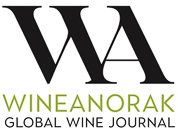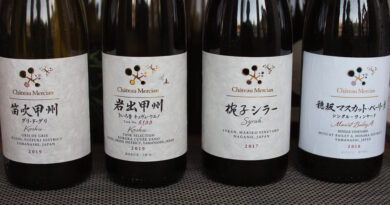French Bloom, a high-end alcohol-free sparkling wine that’s the most convincing product in this space yet
Website: https://uk.frenchbloom.com/
Non-alcoholic wine is currently a topic of intense interest in the wine industry. Many think that drinking habits are changing, and because people are generally more mindful of their health, they are cutting back on alcohol consumption. Even so, they still like the idea of drinking wine with meals or friends, and would like something more complex than most soft drinks or sparkling water.
I’ve been trying quite a lot of non-alcoholic drinks of late, and the one that has impressed me most is an ambitious project called French Bloom. It’s the brainchild of Maggie and Rodolphe Frerejean-Taittinger (Rodolphe is the CEO of Champagne Frerejean Frères, based in Avize), together with Constance Jablonski, who is co-founder with Maggie.
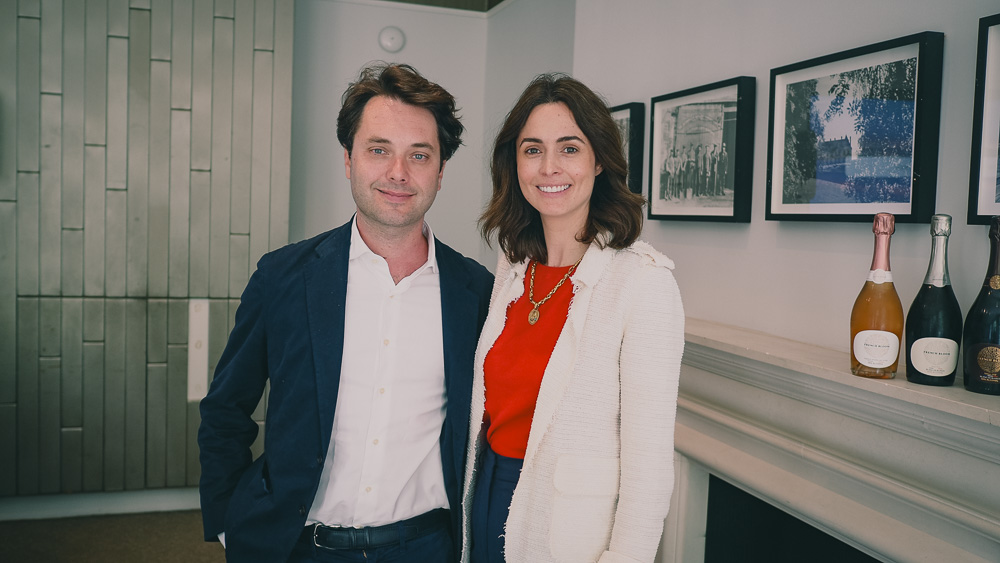
Maggie is an American, married to a Frenchman. ‘My experience is in gastronomy,’ she says. ‘I worked at the Michelin Guide managing the international development of the Guide, for about five years. It was during the period where we had acquired Robert Parker’s Wine Advocate, so there was even more attention on the art of food and wine pairing.’
In 2019 she became pregnant with twin boys. ‘As somebody who appreciates fine wine, especially Champagne, I felt like every event – most restaurants and all celebrations – I wasn’t truly a part of the experience, if I wasn’t as a drinking the wine or champagne that that was offered. And there wasn’t yet [an alternative] that met my expectations with regards to quality, complexity, but also experience, as the champagnes that I loved.’
‘So I shared that with our other cofounder, Constance, who works in the fashion industry, and also my husband. And we set out to create a wine that was at that same level in terms of quality, complexity, depth, and experience. But I also was really adamant that we didn’t compromise with regards to wellness.’
‘Remember, I was pregnant at the time, so I was convinced that people didn’t want to replace a glass of wine with something that was full of sugar, additives, chemicals, preservatives, sulfites.’
She invited her husband, who is head of Champagne Frerejean-Frères. ‘Fortunately, he did have the knowhow or at least the base of the knowhow and, because of course nonalcoholic was a whole other animal and he found the challenge to be quite interesting.’
‘It is very interesting,’ says Rodolphe. ‘It is very challenging, so I have to say, especially because wine is a very conservative religion. I come from this religion. I know how conservative it is. And one of the biggest difficulties we have is that when you remove the alcohol from the wine, you remove the backbone from the wine. This is something that is very challenging because you have to rethink completely the method of making the wine since the beginning. You can’t be dogmatic.’
Rodolphe comes from the Taittinger Champagne family and with his brother he created a specialist Champagne house focusing on Grand Crus, based in Avize. ‘We also have Cognac in my family since 1767, a very old house named Coutanco.
So together they set out on a quest to make complex alcohol-free wines. The beginning of the project was in 2020, when they started to dealcoholize wine. ‘One of the first
learnings we had is that you can take the best wine in the world, and if you’re dealcoholizing it, it’s not going to make a good alcohol free wine,’ says Rodolphe.
They have dealcoholized some great Champagnes and great Burgundies. ‘It’s almost blasphemy,’ jokes Maggie. Rodolphe continues: ‘If you take the best Puligny-Montrachet and dealcoholize it, you you’re losing the point because the backbone of the wine is gone. We realized that actually the skills and the knowhow from Cognac is perhaps the bigger inspiration for us to do what we need to do. In Cognac you take the base wines of Ugni Blanc, which are absolutely undrinkable before being distilled. But the profile of these wines is made to be distilled. So coming from that, you know, we realize that we have to create those base wines. We need to have base wines that have enough shoulder and body to be able to support the dealcoholization.
The technology improvements have helped. ‘In the early days the dealcoholization was done with what we call cold vacuum distillations. But it was done at a higher temperature of 55 °C, so the impact of it was stronger. We used to lose 90% of the aroma in the early days. Now we do three dealcoholizations at a base of 32 °C. And thanks to that we lose only 60% of the aroma. It is still a lot of aroma lost.’
‘The entire thesis we have is to create a base wine with more more body, more oxidative, more acidified, and more oaky, to support the dealcohilization. On top of that, the process is improving is improving is improving, and also the preservation of provenance is coming.’
‘We believe that great wine is first a great terroir in a bottle. The provenance aspect is really key. This is really where you go to the next generations of complex alcohol-free wine, which are much more than just a method, but also the signature of a terroir.’
‘This is where we’re going.’
They are just finishing the purchase of a 20 hectare estate in Limoux, a region in the Languedoc with limestone soils known for making characterful, fresh Chardonnay and sparkling wine. This is also at altitude of 300-400 m. They feel this will be ideal for their purposes. It’s 1.5-2 °C cooler than the neighbouring areas in the Languedoc. Champagne base wines that are dealcoholized don’t have much left in terms of flavour, while the extra maturity and oomph of Limoux is better suited to making base wines for the French Bloom wines.
‘The concept of base wine is something that we are really working on,’ he says. ‘So we have 30% base wine aged in barrels, blending together different years. We have a base wine with 30% of 2022 and 2023, aged in barrels, and then we mix it with the harvest of 2024. 70% of the of the wine is not aged in barrels. So the base wines are extremely, oxidative, extremely oaky and extremely acidified. So we use this really strong base wine to drill the aromatic profile of the wine and especially to get back some textures of the wine after the dealcoholizations. This is really important because most of the alcohol-free wines are very disappointing in terms of nose, in terms of body, in terms of texture, and in terms of length.’
‘So to get back this three-dimensional drawing, with the body, with the length, with the texture, we need to exaggerate the parameters.’
For French Bloom the grapes are organic, there are no sulfites added, and there are no chemical additions. Even though yeasts produce some sulfites in primary fermentation, the total level is always below 10 ppm. The base wine is dealcoholized in the southwest of France. It is then pressurized by adding carbon dioxide to 6 bars of pressure. ‘This is new in the last year and a half,’ says Maggie.
‘We used used to be at 4 bars of pressure,’ says Rodolphe, because we used to do the pasteurization (the wine has to be sterile) by warming the bottle. It was making the bottle explode at 6 bars of pressure. Now we’re doing a flash pressurization, which is much better in terms of process because you don’t warm the wine.’ This allows them to use 6 bars.
One interesting aspect is that they use voile (a yeast flor layer) on some of the barrels. This helps create base wines with personality, adding another level of complexity to the wine. ‘It’s hard to find the balance,’ says Rodolphe. ‘If you do too much, the wine can be too oxidative.’
We taste the wines, and it feels weird not to be spitting! My initial impression is that they taste really good, in a way that most alcohol-free wines don’t. The wines have a vinous quality to them. ‘One of the problems alcohol-free wines often have is that they taste metallic,’ says Rodolphe. ‘There is a dealcoholized wine nose, too.’
‘What we’ve noticed is the less you do before,’ says Maggie, ‘the more you have to add afterwards.’ Nothing is added to this wine: it is dealcoholized, carbonated, then pasteurized. And this is only possible because they work as hard as possible at getting the base wine right.
‘One of the things we have to improve in the base wine is the acidity,’ says Rodolphe. They pick about three weeks earlier than others in Limoux, in order to give optimum acidity. And they also acidify the wine slightly. ‘We are not in Champagne.’
‘The Extra Brut is our gastronomic icon,’ says Maggie. ‘It is fantastic for food pairing. The blanc and rosé are a little bit more aperitif and festive.’
‘French Bloom does not replace Champagne,’ she emphasizes. ‘Sobriety is not a trend. More and more people are saying I don’t want to drink every time and they switch between alcohol and non-alcoholic drinks based on the occasion and the mood. When we launched French Bloom, though, we thought that it was for pregnant women, it was for the sober community. And if you fast forward to today, three years after our first bottles were released, we estimate about eighty percent of our customers do drink wine and Champagne. They’re moderate drinkers. They’re flexi drinkers. They want that experience and balance – the things they love in their favorite champagne. But maybe in the same evening, they’re switching back and forth between an alcoholic and an alcoholic drink.’
La Cuvée is their first alcohol-free vintage Blanc de Blancs, and it’s from 2022. 2023 will be released at the end of the year, and will be a bit dialled back in style from the extreme but delicious 2022. ‘Vintage is a very difficult game,’ says Rodolphe. We tried in 2020, and it didn’t work. 2021 didn’t either. It is 100% aged in barrel.’ The grapes come from older vines from Limoux, with much lower yields and more concentration, and it is aged in barrel for 8 months in barrel without sulfites. The level of oxidation here is quite significant. One of the problems they had was the fact that this is a niche wine. They are trying to replicate the taste of an old Champagne that’s 30 or 40 years old.
‘What we’re trying to achieve is a wine that was very much reminiscent of the vintages that Rodolphe and I love that are 25 to 35 years old,’ says Maggie. ‘Hopefully, it’s already signalling that, with the beautiful coppery robe. We wanted to see what we were capable of achieving.’
Just 17 000 bottles of this wine were made. In comparison, they make close to 500 000 bottles of the core collection.
The partnership with Moët Hennessy as a minority shareholder was announced in October 2024. ‘There are a few synergies that have been identified,’ says Maggie. ‘One is we’re working with them on a few select markets including UK. We also have opened the Nordic market with them and Greece and Canada, too.’
The change in mindset here is so interesting. They are not trying to make a great wine, then dealcoholizing it. They are striving to make a wine that will be great once it is dealcoholized, and that is completely different. There is a parallel with Champagne and base wines here, except there you are making a base wine that you predict will be great once it has gone through secondary fermentation.
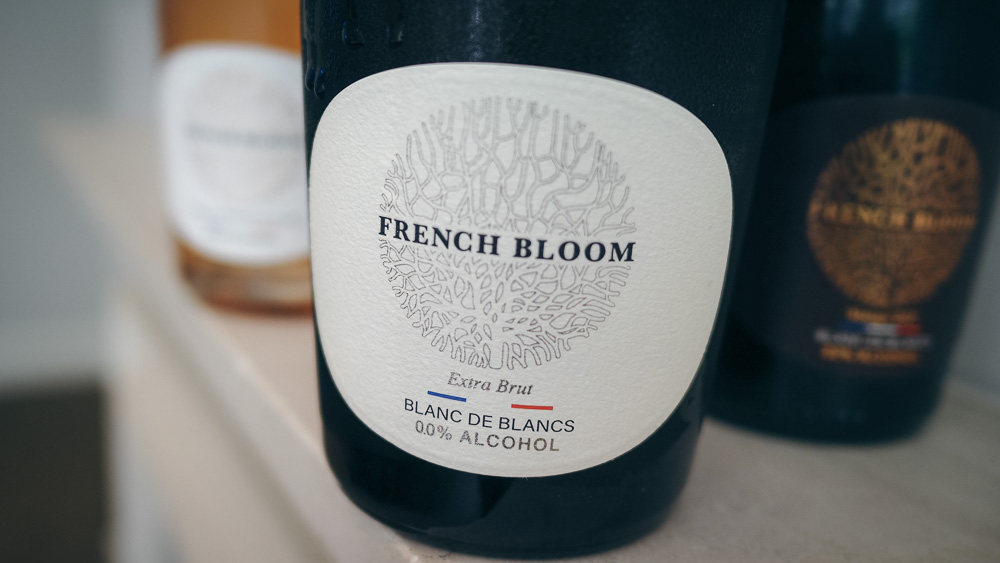
French Bloom L’Extra Brut Blanc de Blancs NV
0% alcohol. This has really interesting aromas of nuts, apple and honey, and it’s slightly oxidative in a nice way. There’s real complexity and interest here. There’s a bit of apple crumble character on the palate, and the mid-palate has a slight hollowness from the lack of alcohol, but there’s also some richness here. Juicy and focused with nice acidity on the finish. The acid carries everything. Bold and layered with great complexity, this is really gastronomic. So encouraging to see this, which isn’t full of sugar. Just one calorie!
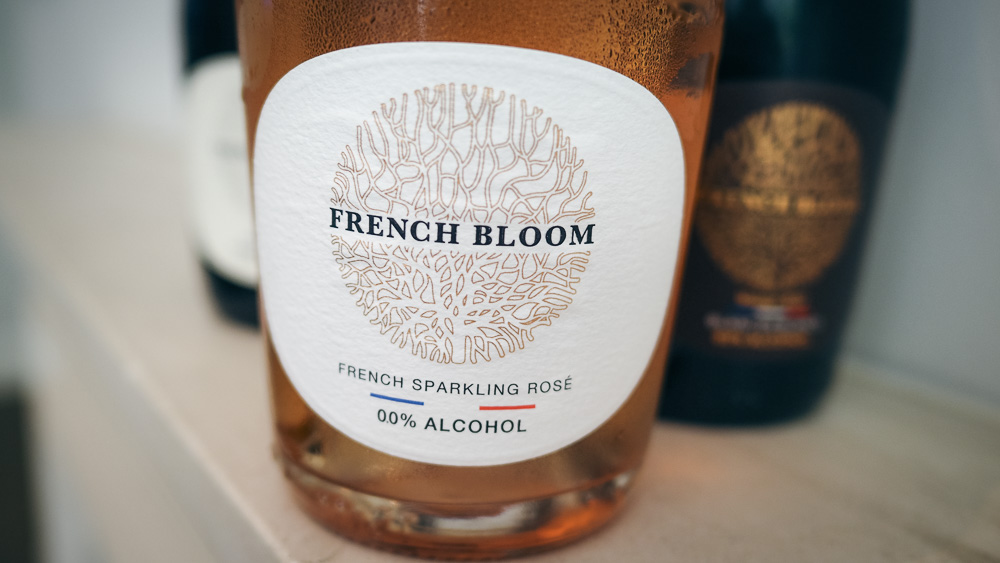
French Bloom Le Rosé NV
This is the tenth version of the rosé. Organic Chardonnay and Pinot Noir. This has a base of wine with some reserve wine, but aged in stainless steel. They take the dealcoholized base wine then add some Pinot Noir must, almost like a liqueur d’exposition, to compensate from the dealcoholized Chardonnay base. 38 g/l sugar level in the final wine. This is pure, bright and fruity with nice balance – it’s not too sweet, with beautiful red cherry and strawberry flavours, and some nice acidity (they add some organic lemon juice after the dealcoholization). Juicy and quite delicious with purity and precision. Just a hint of tea and rhubarb on the finish.
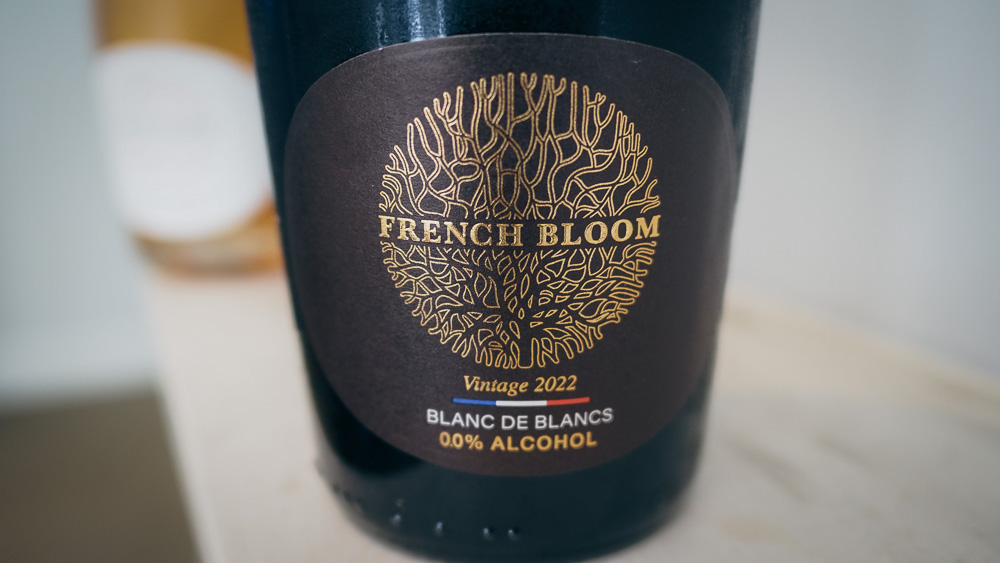
French Bloom La Cuvée Blanc de Blancs 2022
0% alcohol. They tried this a few times before they got it right. 100% aged in barrel for eight months without sulphites. From older Chardonnay vines on limestone, higher up. The aim is to replicate the taste of a 30 year old Champagne. This is gold with some brown hints, and it’s aromatically really powerful with apple, nuts, honey and spice. Oxidative and complex. In the mouth there’s tarte tatin, apricot, roast almond, honey and some nice spicy detail. There’s some very old Champagne/Calvados character and it’s very complex, with lovely depth.
